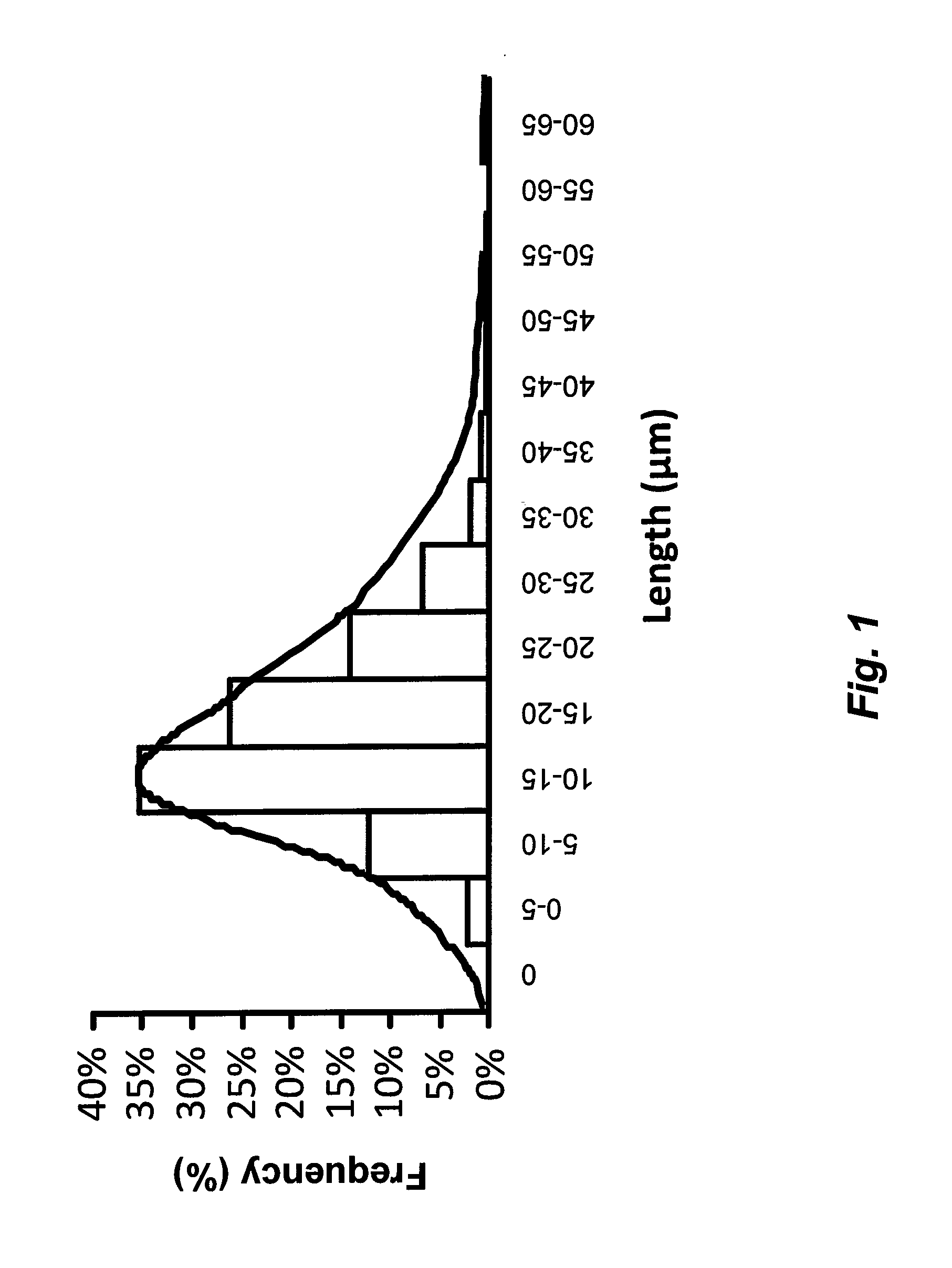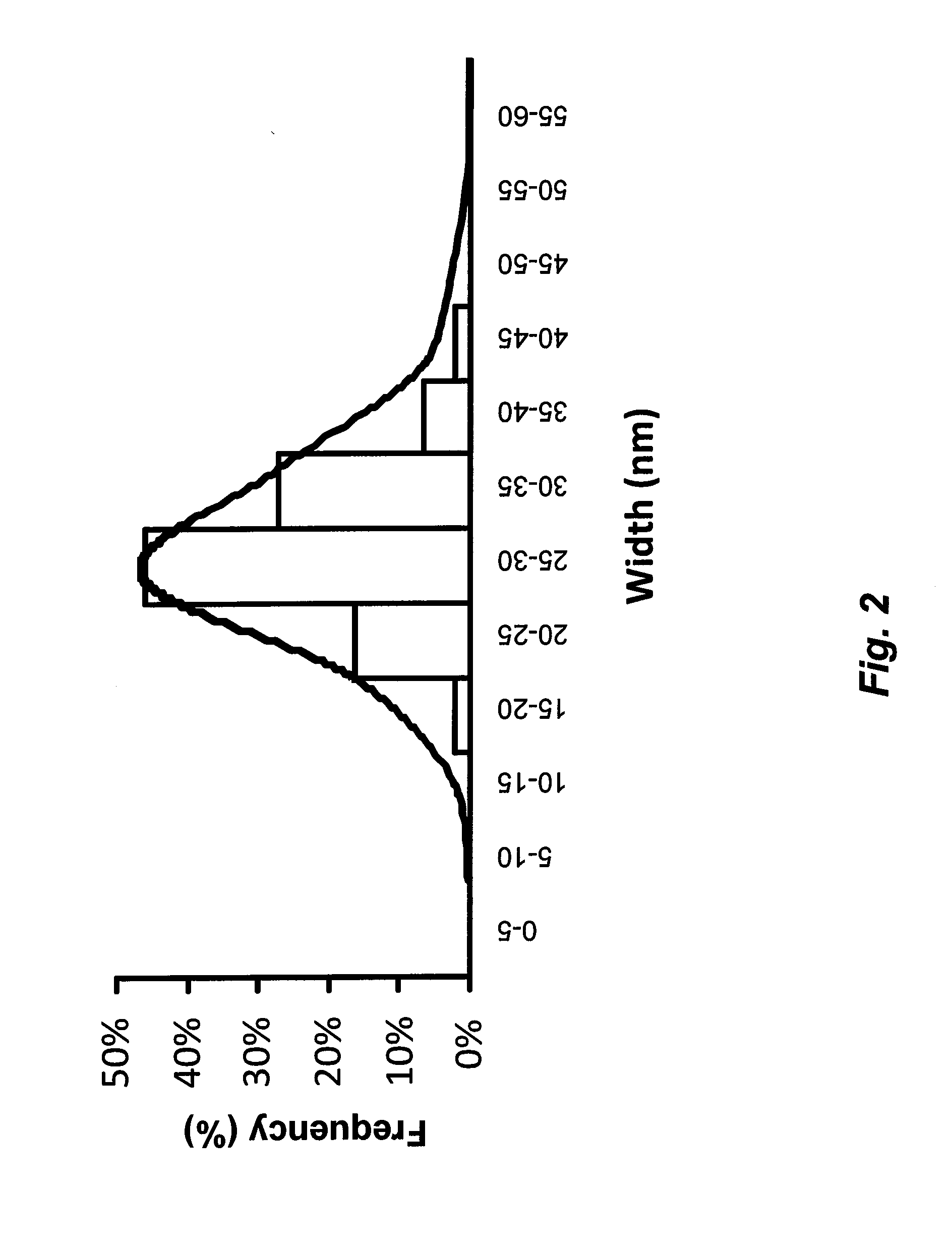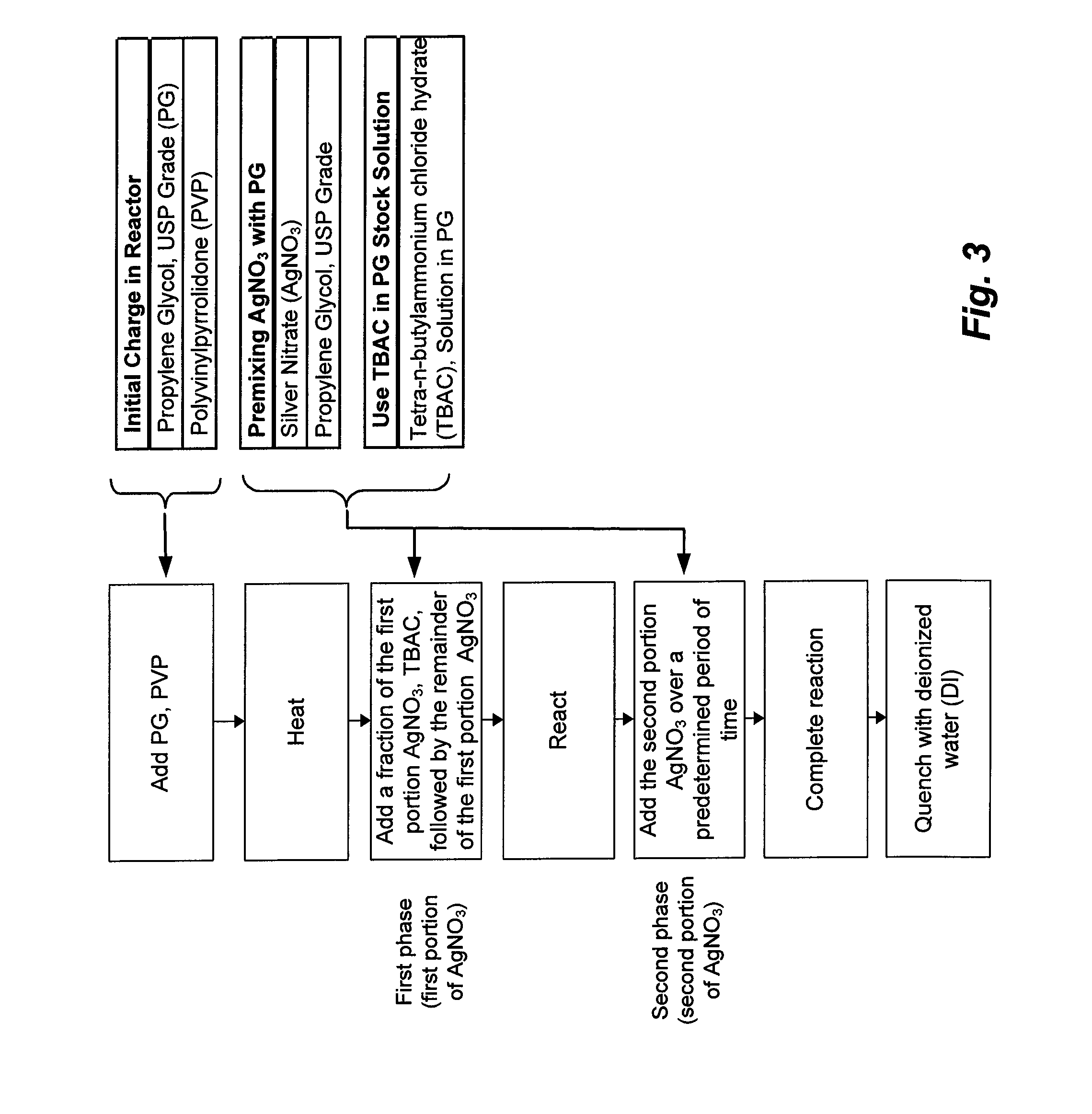Low-haze transparent conductors
a conductor and low-haze technology, applied in the direction of conductors, conductive layers on insulating supports, applications, etc., can solve the problems of inability to maintain satisfactory conductivity, particularly difficult production of low-haze transparent conductors
- Summary
- Abstract
- Description
- Claims
- Application Information
AI Technical Summary
Problems solved by technology
Method used
Image
Examples
example 1
Multi-Phase Synthesis of Silver Nanowires
[0151]Silver nanowires that conform to certain size distribution profiles were synthesized in a two-phase process.
[0152]A solution of silver nitrate (AgNO3) was first prepared by mixing 6 grams of AgNO3 in 37 grams of propylene glycol (14% w / w).
[0153]445 grams of propylene glycol and 7.2 grams of polyvinylpyrrolidone were added to a reaction vessel, which was then heated to 90° C. After the mixture in the reaction vessel has stabilized at 90° C., the atmosphere in the headspace of the reaction vessel is purged with nitrogen for at least 5 minutes before the silver nitrate is added.
[0154]In the first phase of the reaction, half of the total silver nitrate was used. Thus, to the heated reactor, 0.6% of the silver nitrate solution and 1.18 grams of tetra-n-butylammonium chloride hydrate in propylene glycol (10% solution) were added sequentially, followed by 49.4% of the silver nitrate solution. The reaction was allowed to run for 12-16 hours.
[01...
example 2
Purification of Silver Nanowires
[0157]The crude product of Example 1 included crude liquids (e.g., reaction solvents, DI water, reaction by-products), as well as the nanowires formed. A small amount of nanoparticles and nanorods were also present.
[0158]The crude product was collected into closed sedimentation containers and allowed to sediment for 4 to 20 days. Following sedimentation, the crude product separated into supernatant and sediment. The sediment contains predominantly silver nanowires, while the crude liquid, nanorods and nanoparticles remained in the supernatant.
[0159]The supernatant was removed and the sediment was re-suspended in DI water and rocked on a rocker table to facilitate mixing. For final resuspension, repeated pipetting was used.
[0160]FIG. 4 shows the effect of purification on the diameter distribution. Both the crude nanowires and purified nanowires follow a substantially normal distribution. The purification process removed nearly all nanowires of 15 nm or...
example 3
Determination of Length Distribution
[0161]Three batches of silver nanowires were prepared and purified according to Examples 1 and 2. A sample of nanowires was randomly collected from each batch. The nanowire lengths in each sample were measured and analyzed using an optical microscope and Clemex softwares, as described herein. Table 1 shows the size distributions of nanowires prepared in the three batches.
TABLE 1Bin range (μm)Batch 1Batch 2Batch 30-57.6%2.1%4.3% 5-1012.6%12.3%14.6%10-1528.8%35.5%31.2%15-2026.2%26.2%25.9%20-2515.1%14.0%14.6%25-305.7%6.7%5.9%30-352.1%2.0%2.1%35-401.0%0.8%0.8%40-450.5%0.2%0.2%45-500.2%0.2%0.2%50-550.1%0.1%0.1%55-600.0%0.0%0.1%60-650.0%0.0%0.0%
[0162]FIG. 5 further illustrates the size distribution profiles of the three batches of silver nanowires as log normal distributions. It is demonstrated that reproducible size distribution profiles were obtained in nanowires prepared according to the synthesis and purification processes described herein.
[0163]The...
PUM
| Property | Measurement | Unit |
|---|---|---|
| sheet resistance | aaaaa | aaaaa |
| light transmittance | aaaaa | aaaaa |
| light transmittance | aaaaa | aaaaa |
Abstract
Description
Claims
Application Information
 Login to View More
Login to View More - R&D
- Intellectual Property
- Life Sciences
- Materials
- Tech Scout
- Unparalleled Data Quality
- Higher Quality Content
- 60% Fewer Hallucinations
Browse by: Latest US Patents, China's latest patents, Technical Efficacy Thesaurus, Application Domain, Technology Topic, Popular Technical Reports.
© 2025 PatSnap. All rights reserved.Legal|Privacy policy|Modern Slavery Act Transparency Statement|Sitemap|About US| Contact US: help@patsnap.com



